Record Shop Stories meets... DJ Food / Strictly Kev
Strictly Kev tells me stories of working with Coldcut, designing incredible album covers – and where he recommends vinyl shopping in London
Welcome, or welcome back to Record Shop Stories. It’s great to have you here. This week’s post is packed with great stories from my recent chat with Kevin Foakes, aka DJ Food/Strictly Kev, and is too long for email… so read on it on the website or app to enjoy the full version.
Interviews like this are a labour of love for me. But they also take a lot of time to pull together. If you enjoy what I do here on Record Shop Stories, and would feel good for supporting independent music journalism for less than the cost of a beer each month… I would be hugely grateful for your support, thank you.👇
OK, on with the interview…
When I meet Kevin Foakes, aka Strictly Kev/DJ Food, for a coffee in Camberwell, he’s wearing his customary military-style cap.
But while he may be a man with a clear hat preference in real life, he enjoys wearing many hats in his musical career.
As a DJ, musician, record designer (Openmind Design), dedicated music collector and writer, Kev is certainly multi-talented. Most of us would be happy to achieve just one of those things (leave some jobs for the rest of us, eh Kev?!).
He’s best known for his ever-eclectic DJ sets and being an integral part of the Ninja Tune label from its early days, having met legendary British DJ/production duo Coldcut (Matt Black and Jonathan More) in the early 90s.
Here Kev tells us about those heady days working and touring with Coldcut, which led to him eventually taking over the DJ Food moniker from them – initially alongside Patrick Carpenter and now on his own.
He explains how he goes about designing record sleeves and those special-edition ‘zoetrope’ picture discs, and also shares his top record-shopping spots in London… including one he discovered right here, on Record Shop Stories.
It’s great to meet you Kev, and thanks for sparing the time for the interview today.
No problem. It's always good to talk about records with record shop people!
It’s funny, I realise that I actually like going to record shops and talking to the owners as much as I like going to look for records. It’s part of the whole experience for me.
Record shops are social hubs, aren’t they? They draw us record collectors in like moths.
They do. And it feels like the flame’s brighter now than it has been for ages…
It does! One of my favourites, for its social aspect, is The Book and Record Bar over in West Norwood. That shop’s been a really important part of the last ten years for me. I’ve met so many people through going there. I made friends with Michael, who runs it, and met my partner there too.
I even ended up living with Michael for a bit, when I had to move out of my house for six months during a quite tumultuous part of my life. But that shop was like a little beacon. It saved me in a lot of ways.
Alex Paterson from The Orb basically runs his radio station out of the shop, so he's in there all the time. You can walk in and get a free DJ mix from Alex on a Thursday because he's doing his radio show. Thirty years ago, I was going to see him in concert in Brixton – he's one of my idols – but now, you can pop in there on a Thursday and it’s like, ‘Hi Alex, how's it going?’
You've lived and breathed music for a long time. Are you still discovering old stuff as much as listening to new music coming out?
Absolutely. You can't know everything – there's so much out there. I'm really digging back into the late 80s, early 90s at the moment, and have been for a few years. I love rediscovering all the independent dance music that kind of slipped through the cracks, because there was just so much of it.
At the time, people were starting to get samplers at home and learning to produce music outside of a big studio. So there were a helluva lot of homegrown labels. I don't want to say it was the new punk, but it wasn't far off for some people. It was the next generation where people were starting record labels out of record shops and doing it themselves, because they were spurred on by the dance music scene. So many people found a new creative lease of life out of that scene.
True. I turned eleven in 1988, so was a bit young to fully appreciate the start of that period, But I remember The KLF and other dance acts being on Top of the Pops all the time.
Yeah, Top of the Pops was full of dance music. KLF, The Shaman, Technotronic – well, they were kind of terrible – there was as much bad stuff as there was good. There was N Joi, 808 State, Altern 8, all those guys. Some of it's aged better than others. But there's so much out there and I'm still finding stuff.
My favourite thing to look for is those hand-drawn labels from around the early 90s, produced pre desktop publishing… A lot of rave and hardcore, and early jungle – the labels are all a little bit sci-fi and graffiti. You can spot them a mile off.
But I love finding stuff like that and going, ‘What is this?’ There's hardly any information. There's probably a phone number or something and a dodgy matrix number scratched into the vinyl. A lot of those records were full of samples because they were made before people started to get caught for it.
So it's all about delving into UK dance music history from that era, for you?
Yeah. I was talking to [DJ and label boss] Doug Shipton the other week about a possible compilation for something that I was involved in a long time ago. And we were looking back at that era. He does a lot of that stuff – finding people from a name on a label etc. He loves that detective work.
But that's really what you're doing when you're going into a record shop, isn't it? You're digging through these crates and you're looking for that record you've never seen before. You pull it out and you start to visually decode it.
Being a record designer, I can visually decode what style of record I'm looking at fairly quickly. Is it house, reggae, rave, hip-hop? There are visual signifiers and there are also distinct eras of typefaces and design choices. And every music has usually got a visual flavour that you can associate with it – which comes in pretty handy when DJing, too.
I was about to ask you about designing records. Did you get into the music industry more through designing or DJing?
It was the music first, definitely.
I remember being gripped by pop music when I was ten – Gary Numan, Adam And The Ants and that early synth wave from 1980. That went on for a good five years until around ’85, when I embraced hip-hop. At that age, 15, you're like a sponge. I wanted to become a DJ because of that. I wanted to learn how to scratch, basically. Then with that comes mixing and buying records…
The design thing came a bit later. I was always into art, but more into drawing and illustrating. I went to Camberwell Art College down the road in 1990, to study graphic design and illustration. I went in as an illustrator and I left as a graphic designer, changing focus halfway because my tutors realised that I was actually better at graphic design.
I hated graphic design, or thought I did. But they pointed out to me that I was better at it and more original because I didn't know the rules… so I was breaking them all and doing something more interesting than I was with my illustration.
I remember wanting to design record covers at college, but was discouraged from that by tutors saying things like, ‘That's a path to mediocrity and stereotypes, and you'll never make a living.’ Initially, I believed them, then later ignored them, as I realised that was my calling…
I think this was also around the time you got into doing paid DJ gigs?
Yeah, when I moved to London (I grew up in Reigate) I got some proper decks. I was really influenced by Coldcut, because I'd been into their stuff in the 80s. To me, they embodied the best of British DJing with their eclecticism, which took from people like Afrika Bambaataa and Grandmaster Flash in hip-hop.
But I’d become more of an ambient DJ at that point. My friends and I started putting on ambient parties in late ’92, at the end of my third year at college. And that's when I met Matt Black and Coldcut. Ninja Tune had just started off at that point.
I’d kinda got a bit bored with hip-hop – it was the gangsta era, which was really turning me off with the guns and gangs, and misogyny. I’d discovered The Orb and early Shaman, and other stuff. So we’d go raving, but we loved to chill out more. Those ambient parties grew and grew. In parallel with that, Ninja was growing too. And I had a connection to Coldcut, because Matt was doing the visuals for our parties.
I think one of your earlier endeavours with Matt and Jon was working alongside them on the Solid Steel radio shows and on Coldcut’s legendary 1995 ‘Journeys by DJ’ mix CD? How did that all come about?
In terms of Solid Steel… those shows started out on Kiss FM on a Saturday night, and we were there till early ’99, when Kiss started becoming more commercial. Matt and Jon decided we should leave and Matt Black, being ahead of most people I've ever met, was already in there with a low-quality streaming thing that he'd set up. So we carried on as normal, recording from the studio at Ninja and streaming it to whoever wanted to listen. Then Solid Steel moved to BBC London around 2000 I think…
Doing those shows was great. When it was on Kiss, I absolutely loved going up there to the Holloway Road studios and recording – we used to mainly pre-record on a Friday night for it to go out Saturday morning. So that would be Matt and Jon, me and Patrick [Carpenter, aka PC], – the four of us were the core of those Solid Steel shows.
So at that point, Patrick and I were sort of part of Coldcut. We’d turn up at the studio and it's like, ‘What needs to happen today? Are we recording a radio show?’ Sometimes we were doing a remix, or working on a new track. Or we might be doing a mix CD for DJ magazine.
Journeys by DJ was basically us doing the best version of the Solid Steel show that we could. It was all mixed on vinyl, up to a point – recorded live off the decks in sections. So the four of us mixed it until we got to a point where we made a mistake and then we could wind it back and basically mix back into the track again.
We overdubbed some of the voice bits later on another track. But when that came out, there wasn't really anything like it because all the previous mix CDs had been mostly house and techno.
Yeah, that was such an influential mix for a lot of people at the time. I love the way it brings in so many musical styles. So you and Patrick kind of took over the DJ Food moniker from Coldcut around then. How was that – it sounds like it was a pretty natural process?
Yeah, it was. The four of us (Matt, Jon, Patrick and me) were basically DJing under the name Coldcut for a good year and a half before that happened. Coldcut would get booked for a gig, and Patrick and I would go along with them and play in the back room all night – spinning everything from reggae, hip-hop and ambient to electronic and African music. At that time, club owners wanted the main room to be more banging, so Matt and Jon took care of that side of things.
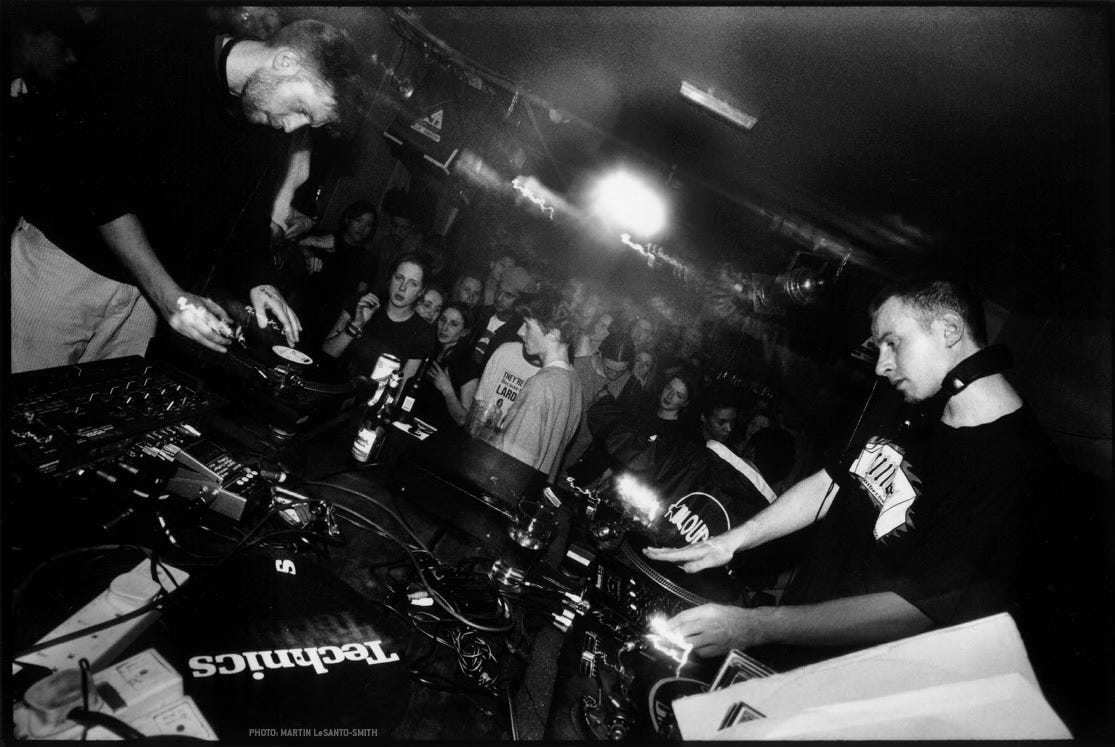
It was only when we started our own club, Stealth, at the Blue Note [in Hoxton], that we were in charge of what music got played where. So we put those back-room sounds in the main room, and that kind of music really came into favour at the same time.
It was around then that Patrick and I started to take over from Coldcut as DJ Food. I didn't really have any involvement in the first five DJ Food albums, the Jazz Brakes series. I came in just as they were making Jazz Brakes 5. When I say they, it was Matt and Jon, Patrick and the studio engineer called Paul Brook, who sadly died a few years back.
So I started to get involved in making music as DJ Food with the Recipe For Disaster record. It was four or five of us on that record. Then for DJing purposes, DJ Food became me and Patrick, while Matt and Jon carried on as Coldcut. They got released from their contract with Arista, who had the rights to the name Coldcut, so they could then record for Ninja as Coldcut. Before that, they’d had to use a million different pseudonyms, including The Illuminati of Hedfuk, Bogus Order and DJ Food, and all that sort of stuff… All those early Ninja Tune records were basically Coldcut under a different name, for that reason!

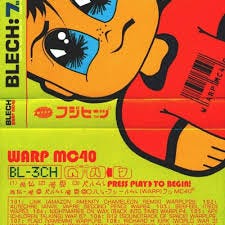
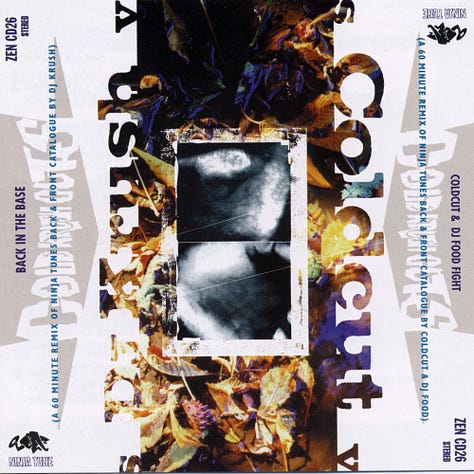
There was a pretty big gap between Recipe For Disaster and the follow-up album, Kaleidoscope. Was that when DJ Food became just you?
No, Kaleidoscope was me and Patrick together. That was the first major DJ Food record that I was involved in that wasn't a remix or a mix CD.
Me and Patrick had done all manner of mix CDs off the back of Journeys by DJ. We did Blech for Warp, which plundered the Warp back catalogue from the time. And we did Cold Krush Cuts for Ninja. I mean, that's basically me and Patrick, but our licensees in Japan said it had to be released as ‘Coldcut vs DJ Krush’. Matt and Jon were away touring, so they asked me and Patrick to do it – it was all gonna be Ninja stuff anyway, so they just told us to do what we wanted with it.
We started making Kaleidoscope off the back of that. It took several years because we were touring a lot, we were remixing non-stop. The 90s were pretty mental after ’95…
I can imagine. The Ninja Tune crew were in demand for remixes all the time, I remember.
We were, but we were touring all over the world for the first time, too. We went to the States and Canada for the first time. Japan, Australia, all over Europe…. We'd go to the States two or three times a year on tour. It's amazing that we managed to make an album at all in those years, in hindsight.
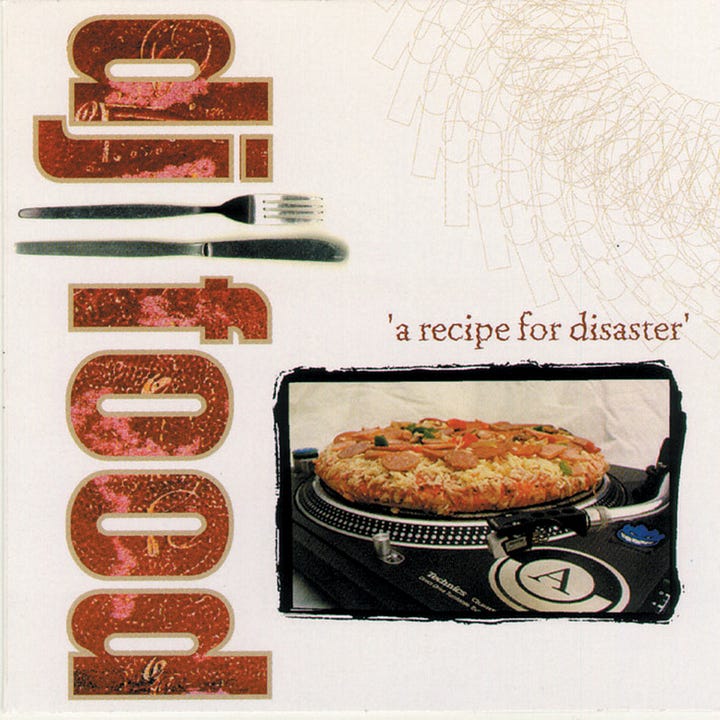
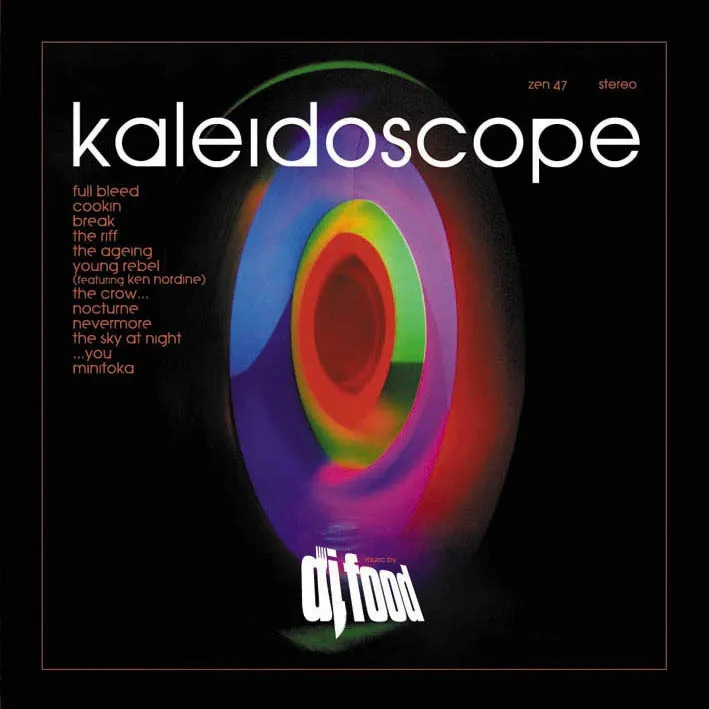
What’s your favourite track on the Kaleidoscope album?
I like ‘Nocturne’, although it's got some tuning problems. I've got dreams of maybe going back and mixing it again one day. I can hear a version in my head that just sounds better, you know?
I guess ‘The Crow’ is probably one of the album’s best-known tracks. I always think the name really seems to fit the ambience of the track.
Yeah, that's really Patrick's masterpiece, that one. I think the name actually comes from the yoga position. Patrick’s very big into yoga! But obviously most people think of the bird…

Yeah, it sounds a bit more menacing than yoga… Let’s dig back into your work as a record designer. I think you designed the Ninja Tune logo, is that right?
Yeah, I did the second version of the logo, and the various evolutions of it. That was my first design job for Ninja. I was around the offices because I was DJing on the Solid Steel radio show with Matt and Jon.
They were talking about redesigning the label and they wanted a new logo. And my friend Mario said, ‘You should try that. You should give it a go.’
And I was like, ‘OK, I will. What have I got to lose?’ I’d just left college and I was doing a day job and just went away, did a logo, took it in and said, ‘How about this?’ And they loved it. So I said, ‘Cool, would you like me to do a record sleeve as well?’ And that’s how it started – because at that time they didn't really have anyone who was like the label’s artist.
So that’s how you became the in-house sleeve designer at Ninja?
Yeah, for a good 10-15 years. I mean, I didn't do everything… though there was a point where I nearly did everything [haha].
But once we got into the noughties, more of the musicians had got desktop publishing, or had a friend who they wanted to do the cover artwork. So the days of one designer doing all of the artwork for a label are now very, very rare. You've basically got to own the label.
There were always a few artists, like Mr Scruff or Kid Koala, who had their own artwork etc, and I would just put all the elements together into the final package. But many others were quite happy to either let me just get on with it. Amon Tobin would just say, ‘This is the title – can you give me some ideas for it?’
It was a fantastic time for me as a designer. I really built up the look of the label. I’ve had less involvement with Ninja in the last ten years, but still do the odd bit for them – mainly nice retrospective repackages.
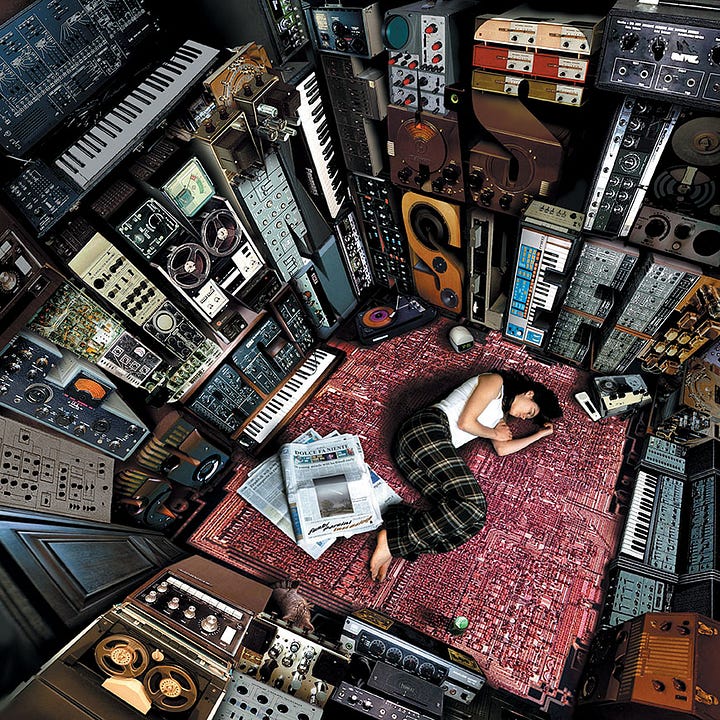

How do you go about designing an album cover? Do you always start with the music?
Actually, I don't start with the music very often! I find if you do, sometimes you can go down the obvious routes and get a certain thing in your head.
I mean, I know roughly what it is – if it's drum and bass or techno or hip-hop or whatever. So I’m not going to do certain things with certain people’s music. But more often than not, I want to speak to the artist or the label, and I want to have some sort of directional brief from them. Not too much, but enough to set me in the right direction. And I want all the copy upfront – it’s a nightmare when they try to add stuff in later, as any designer knows!
I work for a label called De:tuned in Belgium quite a lot now. I'm kind of the equivalent with them as I was with Ninja. They have other designers too, but I do quite a bit.
I know you’ve designed quite a few ‘zoetrope’ records too. Where do you start with doing those?
Yeah, that was a massive learning process. I saw a band called Sculpture with an animator called Reuben Sutherland, who is one of the duo. He does visuals and he has all these… they’re not actually records… they're just printouts in the shape of records that he puts on a turntable and films. And they were all animating. And I was like, ‘This is incredible’.
So I went away and researched that – you know, I picked his brains as much as I could. He didn’t want to give me all the details, which was fair enough – he was doing it a long time ago. This was about 15 years ago. I just thought, that's an amazing, amazing effect. And plus it was connected to records. So I just taught myself how to do it.
It took ages and ages, and then over the years, it's become a kind of fashionable thing. So I've been asked to do more zoetropes because there aren’t many people that can actually do it. There's one guy in the States that does most of them, Drew Tetz. There's a guy in France who does really, really nice ones – animated cartoons. There's me here and maybe a couple of other people, and that’s it.
Which zoetrope releases have you done recently?
I did several for Record Store Day this year. I did Lily Allen, Doctor Who, T-Rex.

Did you do the recent Blur one?
No, that was Drew. Drew gets all the big stuff!
I did a Bonobo one in 2013, for Ninja, and that one blew up. That's kinda been my calling card since. I've realised that when people are searching for ‘zoetrope record designers UK’, my name comes up because of that Bonobo record.
When I get asked to do them, I just need a little bit of animation footage, or something that I can animate to turn into a strip that fits around the disc and goes at a certain frame rate with the speed of the disc. It’s a very technical, mathematical thing… there's all sorts of stuff you can do with it, but yeah, it's a headache! There’s no quick app that does it. There's a lot of very finickety manual labour involved.
So you’ve made a few records and designed plenty. But can you remember the first record you ever bought?
Yeah! It was ‘Zerox’ by Adam and The Ants – I bought it on holiday somewhere with ‘holiday money’ when I was 12 or 13. But I realised later that I had bought a mispressed copy with a different B-side than it said on the label. I think there were like 300 copies with this different track.
I didn't clock that until much later because I didn’t initially have a record player! I went round in this circular argument with my dad – me saying ‘I want a record player’, him saying, ‘But you've got no records,’ and then me saying ‘Yeah, but I've got no records because I’ve got no record player.’ So in the end I just started buying records. And then I said to him, ‘Look, I've got records now. Can I have a record player please?’

Good influencing! And the start of your love affair with vinyl of course… I remember reading in Eilon Paz’s Dust and Grooves book that you had to have the floor reinforced in your home to support your record collection. How big is the collection these days?
Yeah, that was quite scary. I always have the number 10,000 in mind – it’s around that. Since that book came out, I’ve moved into a new place which has got full concrete and steel reinforcements, so it's not a problem any more. But I've got records in three rooms now rather than one, so I can't really keep track.
And I'm not stopping buying, although I am buying fewer and fewer new records. I just can't afford them. But there's no end of affordable used records...
A lot of the new music I buy is digital, which works because I DJ digitally as well as using vinyl. I've always been into new technology – I'm not a vinyl purist in any shape or form. The volume of music out there I want to play means you've got to get it where you can. I don't know how you can be a pure vinyl DJ today – not if you’re playing new releases. You’d need to be rich, because how else could you afford to buy everything that's new every week?
Talking of the volume of music out there… We both did a bit of work on Eilon’s new Dust and Grooves volume 2 book, coming out in October. I proofread the article you wrote about visiting John Peel’s family home Peel Acres and interviewing his son Tom Ravenscroft. I don’t want to steal the book’s thunder, but that must have been pretty cool?
Oh, yeah, unbelievable, unbelievable. I mean, you think you’ve got an idea of what it's like, but until you go there, you've got no idea. It's something else. It's the volume of it and the sheer mania of it, actually.
It's like, here was a guy who lived and breathed music every day of his life, and he had a constant tidal wave of it coming to his house. I don't know how you would sleep at night with that volume of music coming in to you – let alone listen to it. But John seemed to do that, you know, from morning ’til night every day.
His office at the house is literally how he left it. His keys are there with his BBC pass and stuff. The family hasn't really touched it. I know that they've had people in there, though. Tom, John’s son, told us that Brian Eno came and sat in John’s chair and didn't say anything for a good hour. He just sort of soaked it all in.
It sounded incredible, and I know there’s loads more mad insights – and photos – coming in the book. But it leads on nicely to asking you about the maddest place you've ever been record shopping. They must have been a few…
Definitely South Africa, when I was touring with Coldcut. There was a huge five-storey building in Johannesburg, called the ‘Collector’s Treasury’ or something like that. It was crazy. Some floors had antiques, books, studio gear… Then the fourth floor was records – a whole floor of records. It had obviously been offices for some company. We were taken up there in one of those goods lifts with concertina doors, and just left to it. You had to ding a bell for them to come and get you. You weren't allowed to kind of leave of your own accord – you had to file out past the clerk and pay your money!
But that was insane. Shelves full of records everywhere, and not really in any order. We found boxes with multiple copies of KPM library records, all in mint condition. Maybe there'd been a radio station in that building, and that was the archive. There were little office sections on the shop floor, with filing cabinets. You’d pull the drawers out and they'd be full of records. It was overwhelming.
We only had a couple of hours, so we tried to dig through it, but it was virtually impossible. So I ended up just photographing it because it was so amazing. That was probably the most memorable, and maddest, place.
I love record shops in Montreal, as well. We used to love going to Canada because the dollar to the pound in Canada was like 2.3 or something. And Canada was cheaper anyway. So we would just load up on records over there and ship them all back. When we were on tour, that was the routine. Get up, eat, go to the record shop, go to the sound check, eat again, do the gig, and ship all these records back at the end of it.
And San Francisco – so many good shops there. One particular one called Saturn, which I think is only online now. That was just a mecca for weird music. It specialised in the oddball side of record collecting – the kind of pressings you’d never see anywhere else.
Have you ever thought about setting up your own record shop? And what would your ideal shop be like?
I haven’t actually. Although, weirdly, my partner had the idea to do a book and record bar about 20 years ago. She wasn't in a position to do it then, but she's kicking herself now because so many places have got a bar with vinyl. It's become almost normal.
I really like Michael's Book and Record Bar model over in West Norwood, though. You can get tea and coffee, you can get soft drinks, you can get alcohol. It works well for after-hours events. He puts on either private parties or club nights. He can use the counter to serve drinks as well as sell vinyl. His shop has got a great balance – he's got around 80% second-hand records, he's got new records, and he's got books there, too.
But I think my favourite record shop in the UK is Wow & Flutter in Hastings, run by a couple called Tim and Susan. They sell used records, Japanese toys, comics and books. It's a beautifully curated shop. They've got art on the walls, they do coffee... For me, that is the golden ratio.
There’s Pressing Matters in Hastings, too, which is actually three second-hand record shops in one, in a basement. There's Mr Thing’s shop, which is like soul and funk. Then you've got Steve, who sells weird industrial experimental music. And then there’s Andre, who's got a bit of everything else – more dance music and random stuff. It’s stuffed to the rafters but they make it work. It's amazing.
Some great recommendations there, and they’re all shops I plan to visit for Record Shop Stories! But – killer question – if you had a mate coming to London and they only had a day or so to go record shopping, where would you recommend?
Definitely Alan’s in East Finchley – it’s your classic used record shop. He'll make you a cup of tea, he'll chat to you. It's a proper dirty dig, but he's got it in a rough order. It's been there for decades. He's not really on the internet. There is a basic homepage… but he's not on Facebook, he's not on Instagram. I’d go to him in north London.
In south London, I’d go to The Book and Record Bar in West Norwood that I’ve already mentioned, especially if you're into psychedelia - it’s great for that.
West, I would go to the Music & Video Exchange, just because it's a mecca. It's seen better days, but there's three floors – dance on the top, rock on the ground floor, and a bargain basement, including some classical. There are other cool shops around there, too.
Where would I go in the east? Atlantis in Hackney or Rook in Hackney Wick [which I wrote about in RSS#2]. Rook is very good. Both are quite near each other.
If you're looking for used records, they would be my four or five recommendations. Most of them aren’t on the tube – they’re all a bit of a walk from a train station. But I find that they tend to have better stock because it doesn’t get picked over as often as the shops in the centre of town.
There’s also Upside Down Records in Deptford, which is owned by Philippe who used to own Rat Records here in Camberwell. I loved what he had with Rat Records – that used to be a favourite – so I feel an affinity for him. Upside Down is the next best thing.
What are you up to now, musically?
I'm thinking of radio again after not really doing a radio show since Solid Steel ended in 2019 – and I hadn't been doing it very regularly in recent years, anyway. Matt and Jon had done the show for 30 years, and I’d done it for the best part of 25, so we wanted to do other things.
I've got this show on ROVR radio, which is a new online station, but there's no talking on it. I want to get into a talking format where I can do things that aren't just mixing and playing music, but doing interviews and talking about records as well.
I'm still finding what would be the ideal format in my head, because I’d like to do it more than just music – collecting, maybe, I don't know! I’ve always got so many projects and ideas. There's never enough time…
Yeah, very true! I look forward to tuning into that at some point in future. And thanks for sharing your fascinating insights and record shop stories…









And I will add that all your recommendations are being noted, too! 😎
His quote on needing to reinforce the floor makes me question if I need to do that. But the number that always pops into my head with my collection is 4000. 10K is significantly heavier.
Nice interview, Rich. It's good to see this chap's recs, as my wife's family is in the UK and we do go over every few years. Last time I was there (2022), I did go to Music & Video Exchange in Notting Hill.